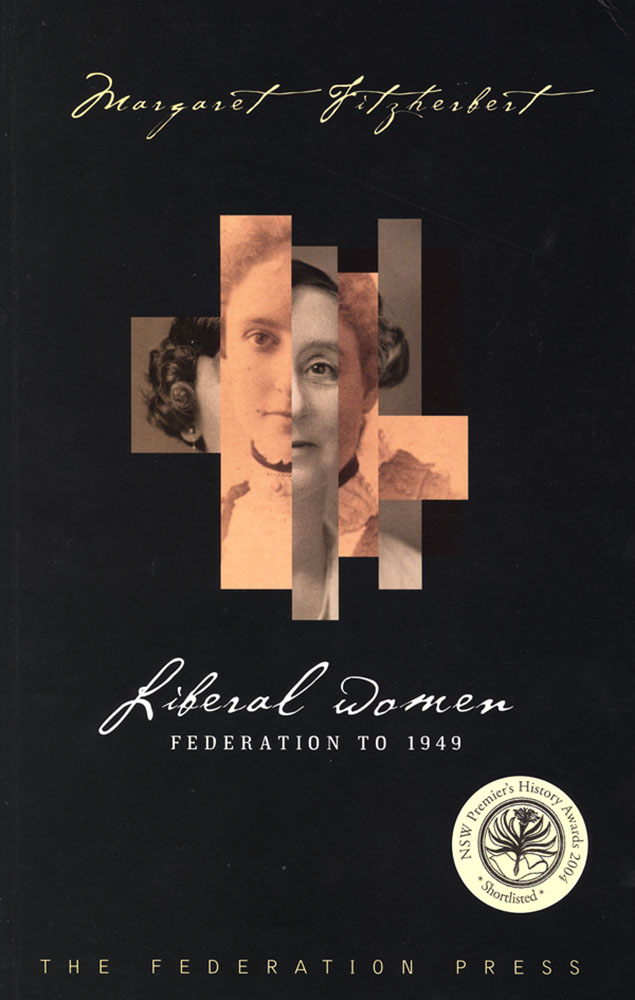In 2004 Liberal Women was shortlisted for the NSW Premier’s History Awards.
When Menzies formed the modern Liberal Party out of the squabbling rabble of the UAP in 1944, he had to cede to the women’s organisations formal representation and real power. Liberal Women is the story of why.
It is a tale of strong, vocal, persistent women who carried the liberal flame across Australia in the first half of the 20th century while the men split and merged, and talked and merged and split again.
It is the story of women who grasped the implications of the female suffrage that followed Federation in a way that no others did: winning elections meant winning the female vote; and delivering the female vote gave political power. The Liberal women formed some of the most effective political organisations in the country.
Liberal Women is the first detailed account of these women as political pioneers: as power-brokers and factional warriors, as candidates for office, and as members of parliament. Relying on extensive primary research, much of it previously unpublished, Margaret Fitzherbert describes their political organisations and activity amidst a wealth of biographical detail on women such as Enid Lyons, Elizabeth Couchman, Ivy Deakin, Lady Margaret Forrest and Irene Longman.
Margaret Fitzherbert’s book is a comprehensive account of the early female key figures in the Australian Liberal (conservative) movement under its various guises. … Fitzherbert has covered an amazingly wide area in her researches for her book. Consequently there emerges a well-knitted narrative that constantly informs and sometimes surprises. There is no doubt that by the 1940s the role of women was being better understood by our federal leaders. The role of the Liberals’ Menzies and Labor’s Curtin in more publicly acknowledging the political importance of women and their ideas is well told in particular by Fitzherbert. Her observations on this period deserve commendation as does her excellent reportage of the suffrage struggles in Australia.
Overall, Fitzherbert’s book is a noteworthy addition to the libraries of both Australian political studies and women’s affairs. It is well-written, occasionally entertaining and profoundly thoughtful.
Journal of the Royal Australian Historical Society, Vol 92(1), June 2006
The book tells us as much about middle-class women’s political activism in the first half of the 20th century as it does about specifically Liberal women. The way the Liberal women did their politics, through personal networks, public speaking, petitions and letters to the paper, was shared with other women’s political organisations, as was their belief in the importance of women exercising their political rights, and many of their policy aims. Equal pay for equal work, women’s rights over property and children in divorce settlements, inheritance laws, issues of women’s and children’s health were also concerns of organisations such as the NSW Women’s Political Education League and the Victorian Women’s Political Association. Marilyn Lake discussed such organisations in Getting Equal (1999), arguing that they bore a feminist non-party ideal, and she deliberately excluded organisations such the AWNL with their strong party links. Fitzherbert’s work shows how much such women’s organisations shared in the period …
Australian Book Review, June-July 2004
Many of the campaigners described by Margaret Fitzherbert were perfect representatives of the moral middle class. .. Most of the pioneers in parliamentary politics came from the non-Labor side. … Fitzherbert’s book is a carefully researched history [which] highlights the richness of earlier versions [of liberalism] compared with today’s weedy specimen
Australian Journal of Politics and History, Vol 51(3), 2005
Margaret Fitzherbert’s study of early Liberal women has two stated aims. Firstly, it seeks to bring to life the women who helped found the Liberal Party and achieved so many electoral firsts for women in the inter and post-War decades. Secondly, it seeks to quantify and explain the extent of their achievements. It succeeds spectacularly in its first objective. The book draws on a mass of primary source material to produce a detailed yet highly accessible account of the major organisations and personalities that made up the early Liberal women’s movement. Fitzherbert has used her status as an insider to the full. Both the scope and style of her narrative have been enhanced by her access to the records and recollections of senior Liberal men and women. However, the book raises more questions than it answers in relation to the causes and the significance of Liberal women’s early successes.
… Fitzherbert has written Liberal women back into history but the task of re-writing the story of the conservative parties in the light of her research remains.
Labour History No 91, November 2006
This book brings many firsthand accounts of pioneering liberal women out of the archive boxes and into the public domain for the first time. It explains the organisational foundations that propelled liberal women to achieve significant electoral firsts in almost every state.
Educational Book Review (India), Nov-Dec 2005




